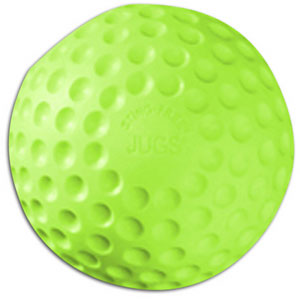4 Hip Mobility Drills To Improve Your Squat
If you asked me “What is the most common dysfunction you see in clients on a daily basis?”, I’d say unequivocally that it would be limitations in hip mobility. It seems like everyone I see from middle-aged desk jockeys to teenage hockey players is suffering from early onset rigor mortis of the hips. With no end of this problem in sight I figured it would be a good idea to post a few of my go-to mobility drills when I’m trying improve hip mobility in the squat pattern. Specifically, these are drills I prescribe when I see clients who are limited in flexion and external rotation from tone in the deep rotators and posterior capsule.
Soft Ball Pin and Stretch
Obviously foam rolling is an absolute must if you are looking to improve your soft-tissue quality and flexibility. If you are not already on a foam roller daily and/or seeing a good therapist periodically then get on that. With that said, sometimes all the time in the world on the foam roller will not get the job done if you have some really tight hips.
Enter the soft ball.
With clients who need some extra attention (pretty much everyone) I often turn to a soft ball to provide deeper work. Softballs seem to be the perfect size implement, balancing both tolerability and effectiveness. Although lacrosse balls are popular and I love them as soft tissue tools I often find them to be too small and too painful for clients to use effectively.
I see many coaches prescribing their athletes to actively roll on top of a ball when trying to work on the deep rotators of the hip. I actually prefer to have my athletes find the target area with the ball and then actively pin and stretch the area underneath, keeping the ball still but actively moving the hip joint. I find this technique is more effective because the pin and stretch provides more consistent pressure on the target area. Also, by actively flexing and externally rotating the hip you can mobilize into the specific ranges of that you are looking to improve for the deep squat.
Posterior Self Hip Mobilization
This self hip mobilization is a great drill I stole from Kelly Starett and have been using for some time now. I have found this to be a perfect drill for those who suffer from a tight posterior/inferior hip capsule, limiting flexion and external rotation, often resulting nasty FAI symptoms.
The key here is to keep the femur relatively vertical with the knee driving pressure straight up through the femur into the back of the hip. Gently shifting in and out of flexion, adduction and external rotation will actively stretch the hip capsule and surrounding musculature allowing the femoral head to glide posteriorly and inferiorly during the squat.
As per suggestion of Kelly, adding posterior traction using a superband can enhance the effectiveness of the drill as well as provide relief for those who have anterior impingement with the hip in flexion.
Active Spiderman Stretch
The active spiderman stretch is a great all around stretch that I do with pretty much all of my training clients. I find the stretch so valuable because of it’s ability to effectively stretch both hips simultaneously. The positioning of the drill allows you to stretch the hip flexors of the back leg as well as the adductors and glutes on the front side hip. I think this stretch is best done actively,having the client alternate sides and contract the backside glute with each rep. You can see by looking at the position the front leg how this stretch can be so effective for improving your squat.
Goblet Squat Hold
The goblet squat hold is simply an isometric hold at the bottom of a goblet squat but it can be brutally effective to improve your hip flexibility. What makes this drill so effective is the intent that comes with it. Using a moderately heavy weight lower into the bottom of the squat with the elbows just inside the knees, resting on the medial side of the vastus medialis. Keeping the feet straight, use your elbows to drive your knees outward increasing the stretch on the adductors. Do not forget to breathe in deeply through the nose and forcefully out through the mouth during the entire drill to enhance the stretch. I like to hold this stretch for roughly 10 breathes.
– Kevin Carr, C.S.C.S., LMT. Contact: Kevin@Movement-as-Medicine.com

